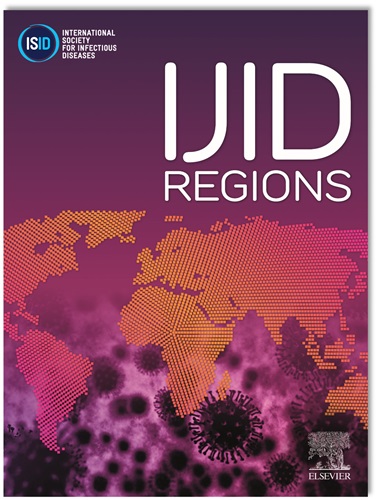IF 4.3
2区 医学
Q1 INFECTIOUS DISEASES
引用次数: 0
摘要
背景:在高海拔人群中,阴道毛滴虫(TV)与高危人乳头瘤病毒(HR-HPV)的流行病学关系仍存在争议。通过子宫颈细胞学巴氏涂片的微生物评价,在显微镜下鉴定TV;采用市售试剂盒检测HR-HPV基因型。统计分析包括χ 2检验、95%置信区间(ci)的优势比(ORs)和年龄分层比较。结果:TV患病率为1.32%,HR-HPV患病率为8.93%,其中以非16/18基因型为主(81.04 ~ 89.13%)。电视呈现倒u型年龄分布(峰值为40 ~ 49岁,1;由于未测量的因素,这种关联需要谨慎解释,未来的研究需要澄清这些影响。本文章由计算机程序翻译,如有差异,请以英文原文为准。
Cervical cytology-based screening identifies trichomonas vaginalis as a significant correlate of non-16/18 high-risk human papillomavirus infection in high-altitude tibetan agro-pastoral communities: A cross-sectional study of 62,657 women
Background
The epidemiological relationship between Trichomonas vaginalis (TV) and high-risk human papillomavirus (HR-HPV) remains controversial in high-altitude populations.
Methods
This was a cross-sectional analysis of 62,657 asymptomatic women from China's Cervical and Breast Cancer Screening Program in Tibetan agro-pastoral communities (2019-2024). TV was microscopically identified through microbial evaluation via Pap smear in cervical cytology; HR-HPV genotypes were detected using commercial kit. Statistical analyses included χ² tests, odds ratios (ORs) with 95% confidence intervals (CIs), and age-stratified comparisons.
Results
The TV prevalence was 1.32%, whereas HR-HPV affected 8.93% of the participants, with the former being dominated by non-16/18 genotypes (81.04-89.13%). TV showed an inverted U-shaped age distribution (peak: 40-49 y, 1.83%); HR-HPV exhibited a U-shaped curve (peaks<20 y/≥60 y). TV-positive women had elevated HR-HPV risk (OR = 1.28, 95% CI: 1.03-1.59), with a stronger association for non-16/18 genotypes (OR = 1.41, 95% CI: 1.12-1.78); this relationship was most pronounced in women aged 30-49 years (OR = 1.30-1.33).
Conclusion
TV infection is significantly associated with non-16/18 HR-HPV in Tibetan women aged 30-49 years, suggesting a potential cofactor role. This association requires cautious interpretation due to unmeasured factors, with future studies needed to clarify these influences.
求助全文
通过发布文献求助,成功后即可免费获取论文全文。
去求助
来源期刊
CiteScore
18.90
自引率
2.40%
发文量
1020
审稿时长
30 days
期刊介绍:
International Journal of Infectious Diseases (IJID)
Publisher: International Society for Infectious Diseases
Publication Frequency: Monthly
Type: Peer-reviewed, Open Access
Scope:
Publishes original clinical and laboratory-based research.
Reports clinical trials, reviews, and some case reports.
Focuses on epidemiology, clinical diagnosis, treatment, and control of infectious diseases.
Emphasizes diseases common in under-resourced countries.

 求助内容:
求助内容: 应助结果提醒方式:
应助结果提醒方式:


